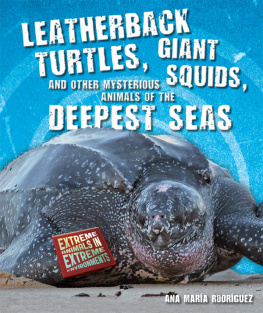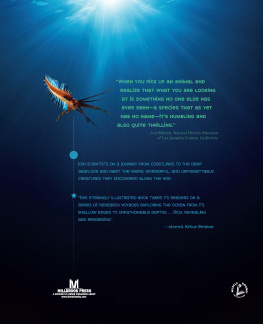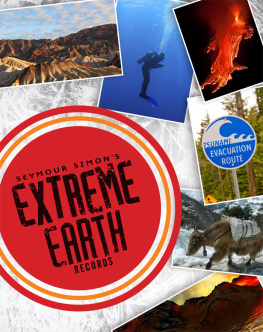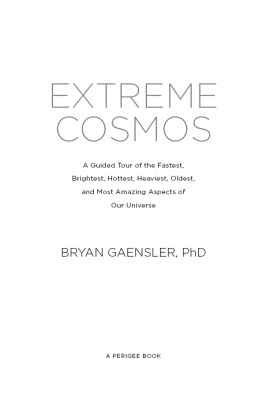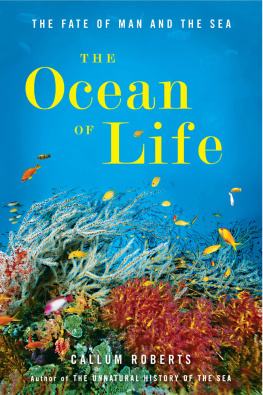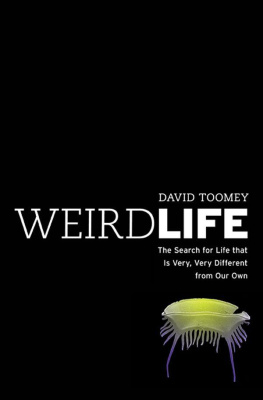THE EXTREME LIFE OF THE SEA

THE EXTREME LIFE OF THE SEA
STEPHEN R. PALUMBI and ANTHONY R. PALUMBI

Copyright 2014 by Princeton University Press
Published by Princeton University Press, 41 William Street, Princeton, New Jersey 08540
In the United Kingdom:
Princeton University Press, 6 Oxford Street, Woodstock, Oxfordshire OX20 1TW
press.princeton.edu
All Rights Reserved
Library of Congress Cataloging-in-Publication Data
Palumbi, Stephen R.
The extreme life of the sea / Stephen R. Palumbi and Anthony R. Palumbi.
pages cm
Includes bibliographical references and index.
ISBN 978-0-691-14956-1 (hardcover : alk. paper)
1. Marine animals. 2. Marine biology. I. Palumbi, Anthony R., 1984 II. Title.
QL121.P35 2014
591.77dc23 2013038174
British Library Cataloging-in-Publication Data is available
This book has been composed in Chapparal Pro with Cyclone and Myriad Pro display by Princeton Editorial Associates Inc., Scottsdale, Arizona.
PREFACE AND ACKNOWLEDGMENTS GUILTLESS WONDER
This book emerged, as many things do, from a gap in the teeth of the established order. The sea is our worlds most fertile stage, populated by wonderfully colorful characters acting out their lives in a daily drama. But too often writing about the sea, or any natural habitat, follows this script: detail the native diversity, catalogue species to awe and amaze, and then toll the bell of doom as you explain the man-made calamities unfolding in these habitats. This is the gap in the established order. A gap in character development. And a gaping need for a simple sense of guiltless wonder about how wonderful the oceans life actually is.
Humans have done sufficient damage to every habitat that the bells can always be heard, but we seek to place emphasis elsewhere. How can an audience focus on a dramas denouement until theyre invested in the players? Where they live? Who they live with? The conflict and beauty of their lives? Hence our focus on the characters in the oceans, the lives they lead, and the tactics they use to thrive. We have tried, in our chapters, to bring these characters to life by combining a novels narrative flair with the scientific accuracy that these subjects demand. And we chose the seas most extreme life to show what life is fully capable of.
We apologize for inaccuracies that may still be present: despite a worldwide network of friends and colleagues, a survey comprising more than 200 topics will never be perfectly accurate while research is ongoing and new results are arriving. Throughout, we used the scientific literature as the foundation of fact on which our narrative is builtbut good storytellers also try to show their subjects in living color, in dynamic movement, and in life and death. And for these elements we sometimes constructed scenes that are fully consistent with the data but may not yet have been witnessed.
We have provided many sources for the material used, but we ran into an interesting problem during our research. Steve, as a Stanford University faculty member with full access to its libraries, enjoys unparalleled access to all the worlds published scientific papers. Tony does not. We tried originally to write this book with no more access to the literature than any other Internet user has, to see whether it could be done. But some of those sources are incomplete or inaccurate, and so we switched to relying on the published literature extensively. The difficulty of public access to published, accurate science was frustrating, but in the end we try to serve as that source for our readers and provide a tantalizing citation trail for the reader to follow if she chooses. We have presented online sources when they appear to be accurate, older works past copyright when they are still relevant, and open-source scientific papers where available.
The interface of novelist and scientist, in the end, proved much more interesting to both of us than any father-son dynamic. We hope such pairings may, in the future, render the world of environmental literature more attractive to readers and writers alike. Moreover, we hope you enjoy reading and thinking about the final product as much as we have enjoyed creating it.
The authors thankfor their support, advice, and guidance throughout this projectthe wonderful family they are fortunate to share, particularly Mary Roberts and Lauren Palumbi. Lauren Palumbi did the drawings at the beginning of each chapter. We also thank Princeton University Press for their support, Peter Strupp of Princeton Editorial Associates for his relentlessly detailed management of the books production, and Alison Kalett at the Press for seeing this projects potential when even we werent entirely sure about it.
We have been fortunate enough to have been helped along by a large number of colleagues, students, friends, and indulgent family members. These include Farook Azam, Scott Baker, Mark Bertness, Cheryl Butner, Greg Caillet, Penny Chisholm, Chris Chyba, Ann Cohen, Dan Costa, Larry Crowder, Mark Denny, Emmet Duffy, Rob Dunbar, Sylvia Earle, David Epel, Jim Estes, Jed Fuhrman, Bill Gilly, Steve Haddock, Roger Hanlon, Megan Jensen, Les Kaufman, Lisa Kerr, Burney Le Boeuf, Sarah Lewis, Jane Lubchenco, John McCosker, Robert Paine, Jon Payne, John Pearse, Dan Rittschof, Clay Roberts, Maggie Roberts, MaryAnne Roberts, Paul Roberts, Sherry Roberts, Carl Safina, Dave Siemens, George Somero, Danna Staaf, Jon Stillman, Dan Tchernov, Stuart Thompson, Cindy Van Dover, Charlotte Vick, Amanda Vincent, Bob Warner, and Craig Young. Each has contributed help, wisdom, warnings, and encouragement.
THE EXTREME LIFE OF THE SEA
PROLOGUE THE EPIC OCEAN
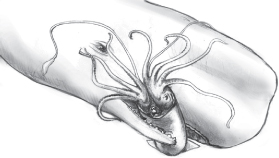
If you stand on a beach and stare out toward the horizon, perhaps squinting at the sunset or the vaporous plume of a distant whale, you can see about 3 miles out. If the weather is clear, you might be looking at 1020 square miles of ocean surfacea fairly large habitat by most wildlife standards. But the global ocean is actually 10 million times the size of your view out to the horizon, and on average there are more than 2 miles of water under every square foot of surface. The most extreme thing about the ocean is its sheer, inconceivable size.
In that enormous volumethe biggest habitat on Earthlives a kaleido-scope of animals, plants, microbes, and viruses. Indeed, the ocean nurtures the most fascinating and unique creatures in the natural world. They occupy many different habitats and deploy diverse survival strategies. None lead particularly easy lives. The ocean might seem bucolic from a beach houses front deck, but its usually too hot or too cold, lousy with microbes, or piled with tier upon tier of predators.
But extreme life thrives in the oceanswhether through speed or guile or infrared vision, by dint of marvelous specialized adaptations. Walt Whitman wrote, I am large, I contain multitudes in his Song of Myself, but the famous line perfectly describes the sea.the sea. We bring you the fastest, the deepest, the coldest, and the hottest, drawing in some of the smallest details of their lives but also painting the backdrop of their role in the oceans.
What lies beneath the sea is more intricate, compelling, and fascinating than the storm-whipped sails of literature or the sensational fearmongering of
Next page

